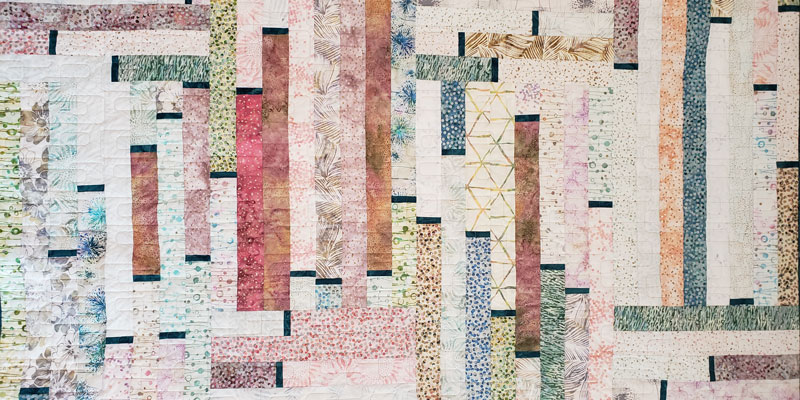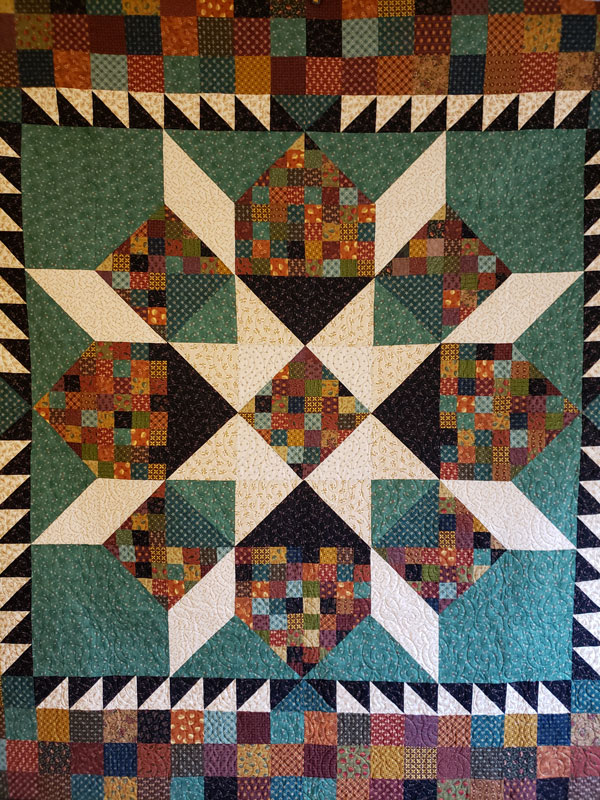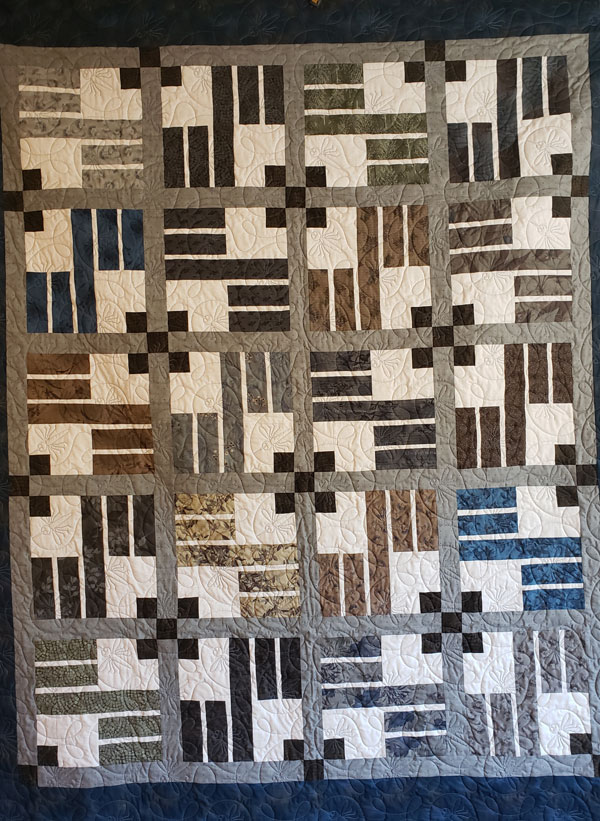Cheri Stockinger sews together the scenes of Cedar Creek through quilts.

Part of Cheri Stockinger's Birch Bark Quilt created during her artist-in-residency at Cedar Creek Ecosystem Science Reserve.
Before the pandemic, staff at Cedar Creek Ecosystem Science Reserve had plans to wrap up 2019 Artist-in-Residence Cheri Stockinger's year on site with a bed-turning: a traditional way of displaying quilts that involves an actual bed, a stack of quilts, and spirited storytelling about the quilts' design, construction and symbolism. The pandemic put those plans on hold. Despite being unable to show them off in person, Cedar Creek staff still plans to share Cheri's substantial body of work with the community via their Facebook page and website. Additional details and backstory on these quilts and others can be found on Stockinger's artist-in-residence page.

Through her work, Stockinger aimed to bring the scenes of Cedar Creek to life through her quilts. The quilt to the right was inspired by a visit Stockinger took to one Cedar Creek experiment in particular: BioCON (Biodi-versity, Carbon Dioxide and Nitrogen), the heart of the field station's global change research work. The experiment is made up of six circular rings planted with varying numbers of plant species in small plots. The exterior of the ring has vertical white PVC pipes that disperse carbon dioxide across the ring. Additional infrastructure is also present inside the rings: removable rain-out shelters that change how plots experience precipitation, heat lamps that manipulated ambient temperature, and a variety of sensors and equipment to measure changes in soil moisture, carbon movement and other variables. Stockinger captured all of these components of the experiment in her quilt. The white and black fabrics represent the various infrastructure and equipment, and the brightly colored small squares illustrate the planted plots. The full quilt captures the experiment visually and artistical-ly, with nods as well to humans' instinctive ability to see patterns in random designs. A bigger-picture view plac-es the research and the quilt in a broader context: the original quilt pattern is called 'Paddlewheel' and invites the viewer to consider European travelers moving via steam ship up and down the Mississippi River, and the long-term history of European settlement, land use and scientific exploration in Minnesota.

This "Plots of Land" quilt was inspired by the many biodiversity research studies underway at Cedar Creek. A common thread across the experiments is the division of physical land into sections, subsections and plots. Stockinger represented this in her quilt with striped ribbonblocks framed by grey fencing (sashing) with dark corner fabric marking fence posts. She also selected a variety of botanical prints to capture the plants being studied in the experiments, and some fabric with words on it to represent the thousands of peer-reviewed papers that have been written by site scientists over the years. Stockinger's attention to detail even comes through in the quilting, which cleverly features mosquitos!
Article originally posted in Cedar Creek's Field Notes Summer 2020 publication.